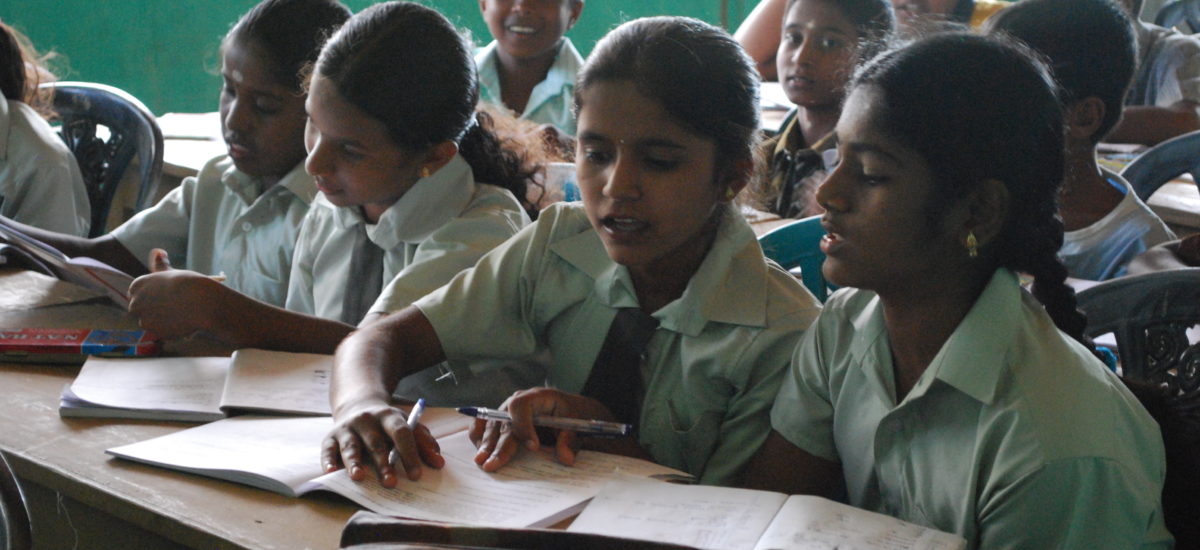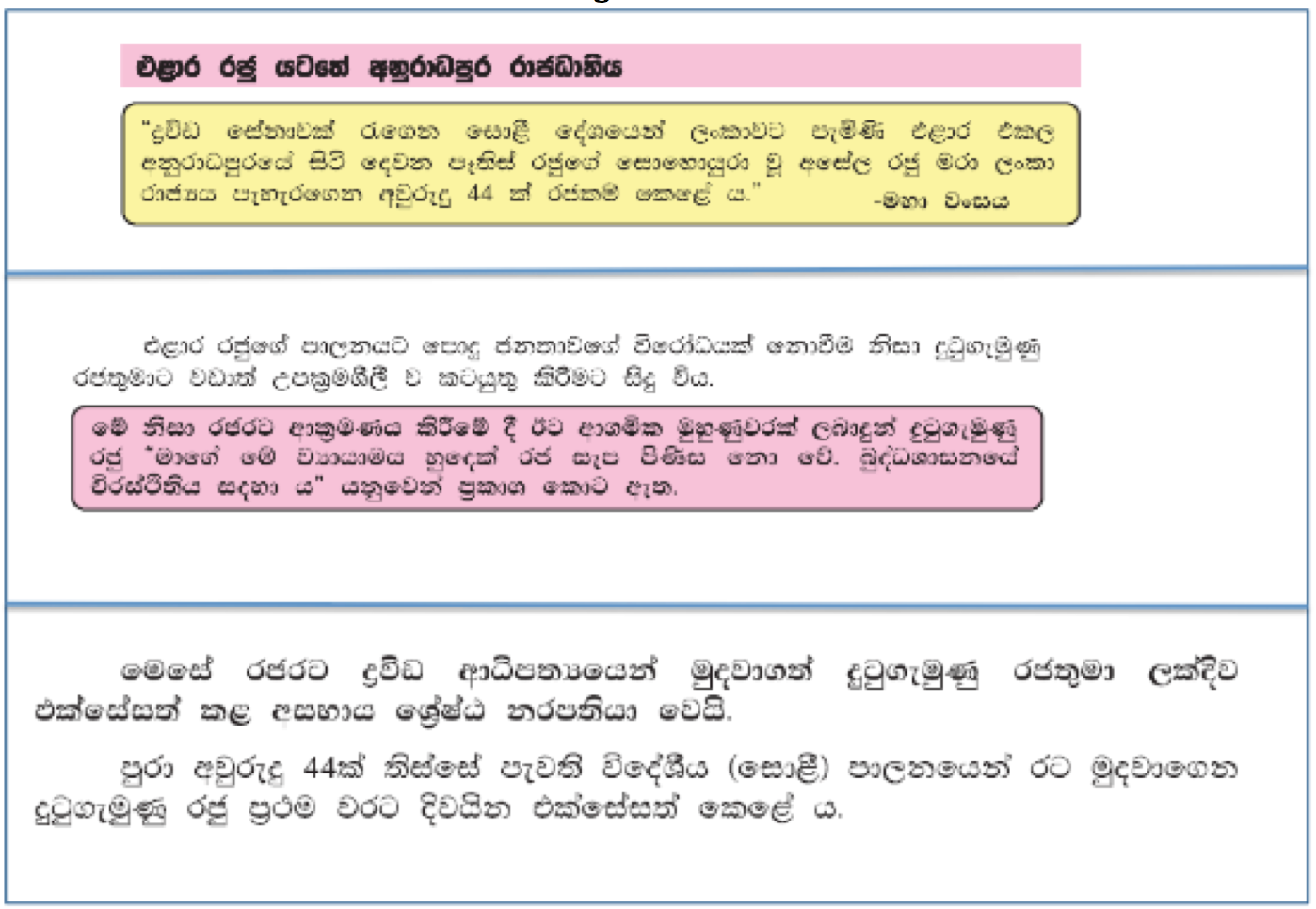Photo from Puvath.lk
Seven years since the conclusion of the armed conflict in Sri Lanka, there is an opportunity to build bridges between divided communities. In this context, education is key to meaningful reconciliation.
Education is a tool that can create religious and ethnic tolerance, and build inter-faith co-existence. The role of education systems in constructing counter narratives to tackle radicalisation and extremism is well documented. This article examines Sri Lanka’s history curriculum in light of global lessons on the role of education in either fostering or undermining co-existence. It argues that Sri Lanka’s history curriculum needs serious revisiting, as it perpetuates the ‘othering’ of minority communities.
In June 2016, the Global Education First Initiative (GEFI) convened a debate on the ‘Prevention of Violent Extremism through Education’ at the UN in New York. At the event, Anusheh Bakht, a GEFI Youth Advocate, observed that school curricula were often used as political tools to ‘perpetuate a certain belief system to guide thinking’.
Germany provides a good example of the impact mass education can have on behaviour and attitudes of future generations. In 1933, fascist Germany overhauled its education system, in order to create a new generation of committed Nazis. Adolf Hitler understood that moulding the youth was central to his goal of creating a Thousand Year Reich. Accordingly, history lessons recalled glorious wars of conquest in the 1800s, and propagated the ‘stab in the back’ myth to account for Germany’s defeat in the First World War. Biology lessons preached the superiority of the Aryan race; and ranked Jews as sub-humans (‘untermenschen’). Before long, the Nazis re-categorised Jews as ‘lebensunwertes’ or ‘unworthy of life’. Such selective accounts of human worth, history, and knowledge were reprehensible, as they actively encouraged prejudice. Furthermore, when sanctioned and organised through the state’s education apparatus, such narratives became deeply entrenched in the fabric of society. Historians such as Ian Kershaw argue that such indoctrination of the youth muted opposition to the increasing marginalisation of German Jews in the 1930s.
In Sri Lanka, notwithstanding the linguistic and religious segregation of numerous schools, the content of textbooks and syllabi is concerning. According to Sasanka Perera, the legend of battles between ancient kingdoms documented in the Mahāvamsa promotes Sinhalese-Tamil antagonism, and suggests ‘a long and bloody tradition’ between the two races.[1] Thus the reproduction of this version of the past in the Sinhala Grade 6 history syllabus is highly problematic. It claims that the Sinhalese King Dutugemunu defeated the Tamil, ‘foreign’ ruler Elara in a war to protect Buddhism, to ‘reunite the country’ and ‘liberate the country from foreign rule’ (see Figure 1).[2] By contrast, the Tamil Grade 6 history syllabus cites Elara as a leader that ruled ‘with justice’ (see Figure 2).[3]
How do the Sinhala and Tamil, Ministry of Education-sanctioned, textbooks carry such opposing interpretations of history? Moreover, historians continue to debate the motives behind Dutugemenu’s war. According to R.A.L.H Gunawardana, Dutugemunu’s campaign against Elara was not a ‘Sinhala-Tamil confrontation’ but one of many battles ‘against several independent principalities’.[4] What then, is the correct version public schools should teach?
Figure 1
Figure 2
The Mahāvamsa chapter[5] that documents Dutugemunu’s campaign also describes the remorse Dutugemunu experienced. Buddhist monks consoled him[6] when Dutugemunu confessed to the slaughter of millions during his campaign for Anuradhapura, saying: ‘only one and a half human beings have been slain here by thee… Unbelievers and men of evil life were the rest, not more to be esteemed than beasts’.[7] It is shocking that so many lives can be compressed into merely one and a half persons; the rest dismissed as no worthier than ‘beasts’. Should we use the Mahāvamsa – which dehumanises minorities – as a source for the history we teach our children?
R.A.L.H. Gunawardana emphasises the ‘role the study of the “remote past” has played in shaping mass consciousness, and thereby in the moulding of the present’.[8] Historical narratives are integral to many Sri Lankan identities and the understanding of their positions in society. Moreover, such interpretations of history are often used to support incorrect political claims and justify injudicious political decisions.
We must be wary of the tendency for narratives taught as part of school curricula to eventually become accepted as historical fact.[9] This further entrenches distorted interpretations of Sri Lanka’s past, and hardens interracial mistrust. Therefore, in the current context, if reconciliation is ever to be meaningful, should we not start with schools and curricula, and prevent the propagation of a history that is designed to mislead and divide?
Shamara Wettimuny has an MSc and BSc in International Relations and History from the London School of Economics. She currently works at Verité Research, a Colombo-based think tank. The views expressed in this article are her own.
[1] Perera, Sasanka, The Ethnic Conflict in Sri Lanka: A Historical and Socio-political Outline (2001) at 14.
[2]National Institute of Education, Sri Lanka accessible at http://nie.lk/Grade6_sinhala.html.
[3]National Institute of Education, Sri Lanka accessible at http://nie.lk/Grade6_Tamil.html.
[4]Gunawardana, R.A.L.H., ‘The People of the Lion: The Sinhala Identity and
Ideology in History and Historiography’ [1979] 5(1) & (2), The Sri Lanka
Journal of the Humanities 1-36, at 15.
[5]Mahāvamsa, 25:67-70.
[6]Mahāvamsa, 25:104.
[7]Mahāvamsa, 25: 109-112.
[8]Gunawardana, R.A.L.H., at 36.
[9]Gunatilleke, Gehan, Confronting the Complexity of Loss: Perspectives on Truth, Memory and Justice in Sri Lanka (Law & Society Trust: 2015), at 10.



